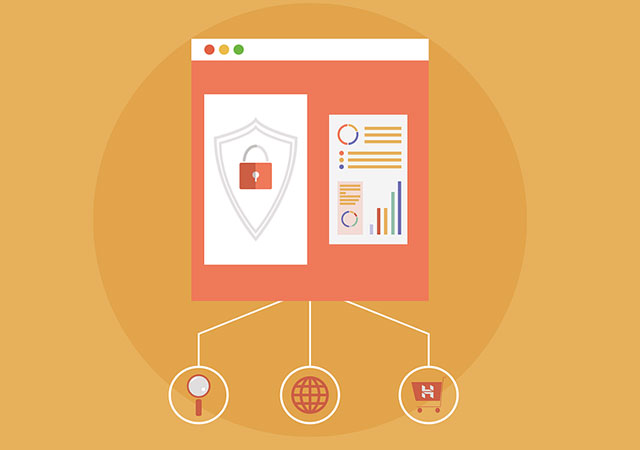Whether you are thinking about moving to Magento 2, or have a Magento 1 site you’re not happy with, you’ll be glad to know that there are many reasons to consider Magento 2. In this article, we’ll cover the top reasons to consider Magento 2 over Magento 1. We’ll also cover some of the features that will make Magento 2 stand out from Magento 1.

Performance
Using Magento 2 for your ecommerce store can give you an advantage over Magento 1. It improves the speed of your store, gives better user experience, and increases the reliability. It also improves the visibility of your store.
Magento 2 is one of the most popular open – source ecommerce systems. It was released in late 2015. It is a faster and more stable version of Magento. The new version includes many new features. It supports newer versions of PHP and new technologies. It also provides an organized admin panel.
Magento 2 uses Varnish caching to improve the speed of the website. It also works with Turpentine, a very fast reverse-proxy. It can handle millions of requests and can improve scalability for static sites.
Magento 2 also offers full-page caching to improve speed. It minimizes the use of JavaScript and optimizes the images on the server. The home page and category pages load in less than 1.5 seconds.
Magento 2 also works better on mobile devices. It is optimized for smartphone browsers, and it supports HTML5 technology to deliver cleaner code.
In addition, Magento 2 has improved the speed of the checkout process. It allows users to make cart updates without reloading the page. It also offers Meta tags for individual pages to improve SEO.
Magento 2 is also more secure than its predecessor. It uses newer technologies such as HTML5, API/GraphQL, and RequireJS. It also supports newer versions of PHP, including PHP 7.4, 7.2, and 7.2. It also supports newer versions of Apache and NGINX. It also uses React/PWA to enhance its interface.
Although Magento 1 is close to its end of life, you can still use it. It is free to download and use. However, it has a steep learning curve.

User-friendliness
Compared to Magento 1, Magento 2 has a lot more to offer. It’s a much more powerful e-commerce platform. It also provides a better mobile experience for online retailers. It’s also faster and more secure.
Magento 2 has the ability to process up to 10 million page views per hour. It also supports the latest version of PHP, so pages load quicker. It also features meta tags for individual pages, which helps with SEO. It also includes a server-side module that clears cache.
Magento 2 has a dashboard that helps store owners find information quickly. It displays information about products, sales, and average orders.
There’s also a team dashboard that gives an overview of a store’s performance. It also has a feature that displays average orders for a given date.
The Magento 2 admin panel is also impressive. It’s a lot easier to navigate, and features a touch-sensitive design. It also has a dashboard that shows past five orders, as well as product details.
One of the features of Magento 2 is the ability to have more products added to the cart. This isn’t the case with Magento 1. It’s also more secure, which makes it a better option for your customers.
While the Magento 1 Admin panel has a few good features, it also has a few shortcomings. It’s easy to see why Magento 2 has been a hit. It’s also easier to upgrade the platform, and offers a more streamlined checkout process.

Security
Whether you are setting up a Magento 2 site or an older Magento 1 site, you will need to make sure you’re on the most secure version of the platform. While both versions offer robust security, there are some differences.
Magento 2 is an updated version of Magento, and compared to Magento 1, it is much more secure. It supports newer ecommerce innovations and also features AI, React PWA compatibility, and improved performance. It also supports newer PHP versions.
Magento 2 also has a simpler checkout process with two steps, allowing users to purchase items without having to wait for the entire page load. It also has tools to manually optimize images on your server. This makes it faster and more secure than Magento 1.
Magento 2 also offers the security of a firewall. A web application firewall prevents the majority of attacks. It also has a built-in module for clearing cache.
While Magento 2 is PCI compliant, Magento 1 is not. If your store does not comply, you could face large fines or lose your reputation.
While Magento 1 is free, it does require ongoing maintenance and support. If you are using it for your business, it is important to update your store before June 2020, when Magento will no longer support it. You should also check your site for any security vulnerabilities. You can also hire a professional to fix any problems.
Security patches are also important. If Magento doesn’t release security patches, your site could be vulnerable to hacking and data theft. It could also lead to vulnerabilities in your customer data and store data.

Ajax cart and one-page checkout
Whether you’re running a B2B or B2C business, a one-page checkout is important for increasing sales and improving the shopping experience for your customers. Keeping checkouts simple and easy reduces cart abandonment.
Magento 2 provides a convenient checkout experience. The new checkout setup uses AJAX to simplify the process and reduce cart abandonment.
Customers can add products to their carts while they are on the page and view the total amount. Then they can save items for later. They can also revise their cart through a pop-up window.
The AJAX Cart extension for Magento 2 adds products to the cart without reloading the page. It also displays a popup showing the subtotal, quantity and price of the products added to the cart. It allows customers to view the entire shopping cart and cross-sell related products.
Customers can also review their order before finalizing the purchase. The extension can be run in both automatic and manual modes. It can be customized to display different checkout blocks, allowing store owners to create the checkout process of their choice.
The extension also includes an Ajax payment field. This can make the checkout process even faster. The extension also includes a countdown timer that displays in the Continue Shopping button. The timer can be set to run after a specified period of time.
The extension also allows you to specify custom attributes, including shipping and billing addresses. In addition, you can use Auto Related products to boost cross-sells. This can be configured by setting a countdown timer in the backend.
The AJAX Cart extension for Magna 2 comes with installation and configuration guides. You can also get free technical support within the first 6 months of owning the extension.

Support for Progressive Web Apps
Using Magento 2 to create a Progressive Web App can be an affordable way to add mobile app features to your e-commerce site. A PWA provides your customers with a more immersive experience than a traditional website.
These apps offer features similar to native apps. They work fast, are secure, and can run offline. They also give you the flexibility to build backlinks and implement SEO techniques. Unlike other platforms, Progressive Web Apps do not require an app store.
They work on mobile and desktop devices. They use modern web technologies and design patterns. They also use the CacheStorage API to store pages. They can be installed on mobile devices, like a regular application, and can be added to the home screen.
Progressive Web Apps use the Unified Resource Identifier (URI) to store data and reload the state. They also use service workers. These service workers are JavaScript files that respond to user actions and load data. They also support push notifications and background syncs.
Progressive Web Apps are a fast way to improve your customer’s experience. They also improve your store’s performance. They are easy to install and can be shared with other users. They also work on mobile devices that lack Internet. They are a great solution for store owners with limited budgets.
A Progressive Web App can be installed on a mobile device by simply clicking on a website. When the user launches the app, it will prompt them to add it to their home screen.


